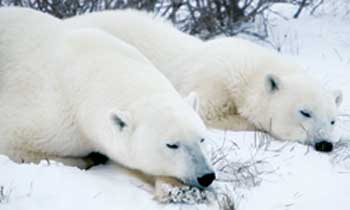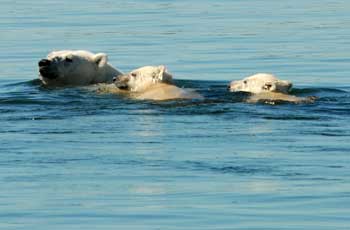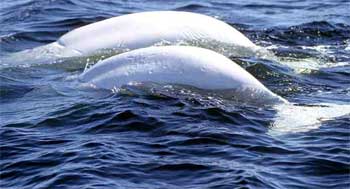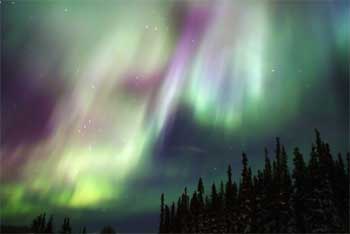
Polar bears, beluga whales and Northern Lights await in Churchill, Manitoba. This rugged town on the shores of Hudson Bay offers the perfect place to explore Canada’s North. Connected to the Atlantic Ocean and the Arctic Ocean, Hudson Bay is the second largest bay in the world. Churchill was founded in 1689 as a fur trading post for the Hudson’s Bay Company. With no main roads into the town, access is by train or by plane. Yet, despite the remote location, hundreds of people come to this pioneer town. Many are after a glimpse of polar bears, particularly since they became the poster child for global warming. Churchill has been dubbed the Polar Bear Capital of the World.

Close to 60 percent of the world’s population lives in the Canadian North where they hunt on the ice for seals. Polar Bears prefer to stay on the ice year round usually between mid-November until mid-July. Further north the ice stays frozen year-round but along the southwestern Hudson Bay, the ice does completely melt away in the summer months forcing the bears to make their way inland. Once inland, the bears go into a walking hibernation where they laze around to conserve energy. In the fall, the bears gather together at Cape Churchill to wait alongside the coast for the ice to freeze.
Tour companies offer trips out to the Cape in specially designed buses known as Tundra Buggies that allow a clear view of the polar bears while keeping tourists safe from hungry bears. The 24-hour Polar Bear Alert Program locks up any bears that wander too far into town releasing them once the ice is frozen. The peak season for polar bear sightings is anywhere between October and November—it’s hard to predict when the annual migration will begin. Due to the timing and the fragility of the environment, the trip does take a certain amount of planning. One-day tours are offered from Edmonton or Calgary with charter jet airliner flying visitors into Churchill. Longer trips of three to five days can also be arranged.

During the summer months, another special visitor arrives in Churchill. In July, hundreds of Beluga whales migrate to the area to give birth along the shores of the Hudson Bay and the Churchill River. These small white whales resembling porpoises are famous for their friendliness and curiosity. They are born gray, but turn snow white at maturity. The most vocal of all sea mammals, Belugas have been nicknamed sea canaries. The Churchill region currently has the healthiest and largest population of Beluga whales worldwide making it easy to spot them on any outing.
Local companies offer a number of different trips in either small dinghies or boats along the river on into the bay where the belugas will swim alongside. Usually polar bears can be spotted along the banks of the river in their summer dens. Visitors can also opt to brave the frigid waters and swim alongside the whales. Unlike the polar bear tours, arrangements for seeing the whales can be made once you arrive in town.

From late May until August, Churchill is also prime bird watching territory with over 270 species landing in the area to built their nests. Flocks of Snowy Owl, American Golden Plover and the Tundra Swan are just a few of the birds that can be seen in the area. Churchill is also the best place to watch the spectacular Aurora Borealis. The Northern Lights are nature’s own light-show, the bright dancing lights are the result of electrically charged particles from the sun colliding with Earth’s magnetic field. They can only be seen at either the north or south pole. When the charged particles combine with the different gases in the atmosphere spectacular colours emerge.
The Cree Indians have named the ethereal displays of pink, green and purples as Dance of the Spirits. Since Churchill is located directly beneath an Auroral Oval, which means that for 300 nights per year, the town is bathed in the Northern Lights. One of the best times to see them is in late August or from December until late April.
Head north to Churchill to discover white bears, white whales and coloured skies.

